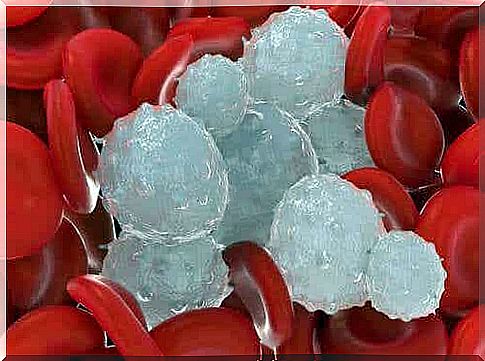Everything You Need To Know About Hematological Diseases

There are many different hematological diseases. Some are relatively common, while others are very rare. A type of abnormality in the production of blood or some of its components causes them.
Most of them can appear at any age, and almost all can lead to serious health problems if left untreated. Below you will find the most important haematological diseases, according to the most conventional classification.
Hematological diseases: Anemias
This is one of the most common hematological diseases. However, we should actually refer to them as anemias, since there are several types. They are all characterized by low hemoglobin levels.
The main types of anemia are:
- Iron deficiency. It is a type of anemia that occurs due to iron deficiency, which the body needs to produce hemoglobin. It is the most common type.
- Megaloblastic. Also known as “vitamin deficiency anemia”. It is a disease characterized by deformed or enlarged red blood cells. Low levels of some vitamins cause it.
- Hemolytic. It is a group of disorders in which red blood cells are destroyed faster than they are produced.
- Aplastic. This is a rare hematological disease, in which the body is unable to produce all the red blood cells the body needs in the bone marrow.
- Fanconis anemia. This is a rare inherited disease characterized by bone marrow failure, congenital malformations and a tendency to develop solid or blood tumors.

Leukemia, one of the most serious haematological diseases
Leukemia is one of the most serious haematological diseases, since it is a type of blood cancer. It occurs in the bone marrow and causes a rapid growth of abnormal white blood cells. Cancer cells weaken the production of red blood cells, platelets and also white blood cells.
The main types of leukemia are:
- Acute lymphocytic leukemia (ALL). This type of leukemia develops rapidly and is characterized by the spread of a type of white blood cell called lymphocytes or lymphoblasts. It is also the most common type in children.
- Acute myelogenous leukemia (AML), which is a rapidly progressive leukemia that affects myeloid cells. This is a type of white blood cell that usually develops into different types of mature white blood cells, red blood cells or platelets.
- Chronic lymphocytic leukemia (CLL). It is basically the same as acute lymphocytic leukemia, but it develops slowly. It is more common in older adults.
- Chronic myelogenous leukemia (CML). Although similar to acute myelogenous leukemia, it develops slowly. This is the type of leukemia with the best prognosis.
- Hair cell leukemia. This type is characterized by excessive production of B cells, which “look hairy” under a microscope.
Hematological diseases: Lymphomas
Lymphomas are a type of cancer in which there is an arbitrary spread of lymphocytes. In other words, they increase the immune system’s defense cells. It also occurs if the lymphocytes do not die when they should. Although this usually occurs in lymph nodes, it can also occur in the liver or spleen.
There are more than 60 variants of this type of hematological disease. For practical purposes, however, they are mainly classified into two groups:
- First, Hodgkin’s lymphoma. A cancer of the lymphatic system where there is abnormal growth and proliferation of cells. It accounts for 22% of the total lymphoma cases and is more common in people between 20 and 40 years of age.
- Second, non-Hodgkin’s lymphoma. This is a lymphatic cancer in which tumors are formed from lymphocytes, a type of white blood cell. It is the most common type of lymphoma.
Multiple myeloma
This is a type of lymphatic tumor that is characterized by the proliferation of plasma cells. These cells produce the antibodies that protect the body against infections and foreign bodies.
Plasma cells are found in the bone marrow. They should multiply to fight against a foreign agent. When it disappears, the spread ceases. Myeloma causes the cells to continue to grow and accumulate, producing too much of the same antibody.
Myeloma may be symptomatic or asymptomatic. Although it mainly affects older adults, it can occur from the age of 40. Experts do not yet know what causes it.

Other haematological diseases
We should also mention other hematological diseases with a lower incidence than those we just explained above:
- Hemochromatosis or iron overload. Excessive absorption of iron leading to several serious diseases.
- Prothrombotic coagulation disorders. A platelet disorder that causes excessive coagulation.
- Bleeding disorders. Coagulation abnormalities leading to continuous bleeding.
- Chronic myeloproliferative syndromes. A group with several diseases characterized by an uncontrolled production of bone marrow cells.
- Myelodysplastic syndrome. A group of cancers where blood marrow in the bone marrow does not mature or does not produce healthy blood cells.
- Porphyry. A group of diseases characterized by an accumulation of various substances that produce porphyrin.
How to detect a hematological disease
Hematological diseases are detectable. Therefore, you should see your doctor if you have suspicious symptoms or a family history of these diseases. It is also important for children and adults to get routine checks, as this helps to ensure early detection.









